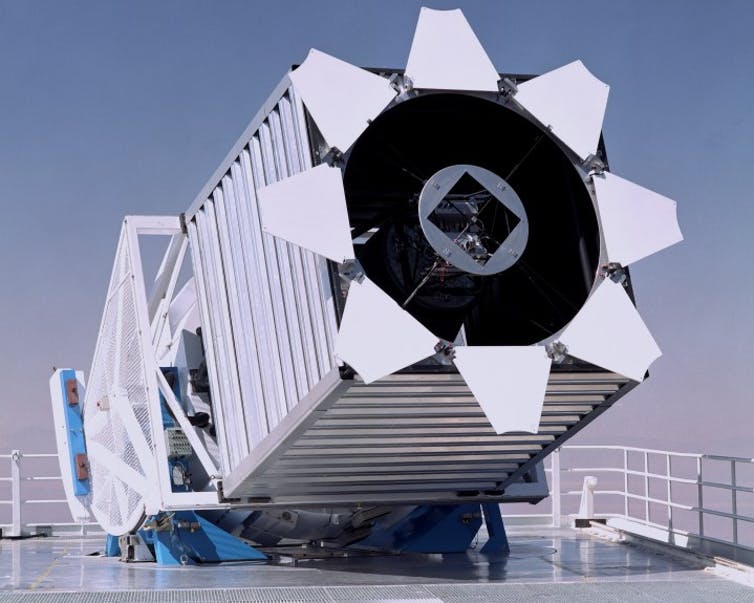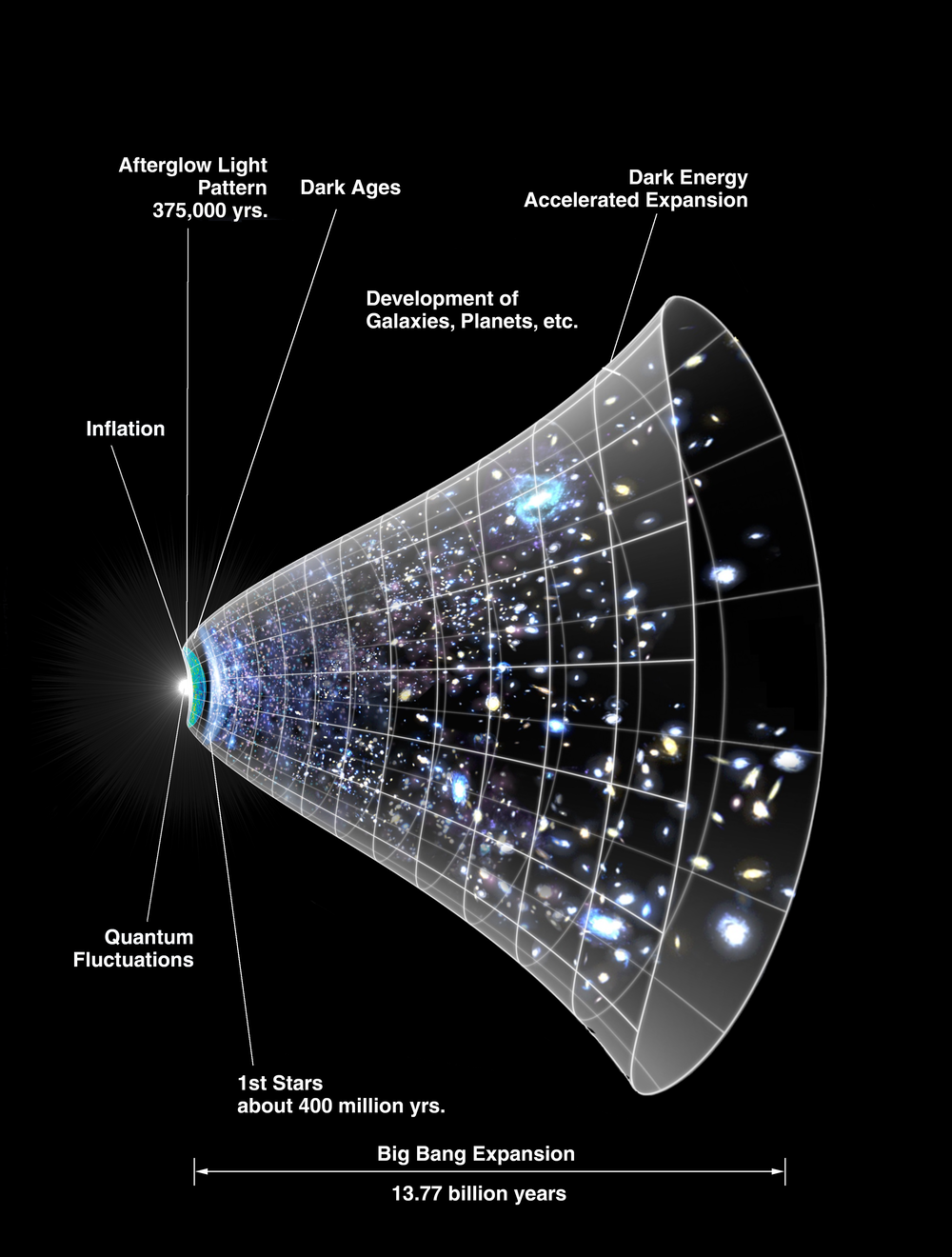
Dark energy: Map gives clue about what it is — but deepens dispute about the cosmic expansion rate

This article was originally published at The Conversation. The publication contributed the article to Space.com's Expert Voices: Op-Ed & Insights.
Julian Bautista, Research Fellow, University of Portsmouth
Dark energy is one of the greatest mysteries in science today. We know very little about it, other than it is invisible, it fills the whole universe, and it pushes galaxies away from each other. This is making our cosmos expand at an accelerated rate. But what is it? One of the simplest explanations is that it is a “cosmological constant” – a result of the energy of empty space itself — an idea introduced by Albert Einstein.
Many physicists aren’t satisfied with this explanation, though. They want a more fundamental description of its nature. Is it some new type of energy field or exotic fluid? Or is it a sign that Einstein’s equations of gravity are somehow incomplete? What’s more, we don’t really understand the universe’s current rate of expansion.
Now our project — the extended Baryon Oscillation Spectroscopic Survey (eBOSS) — has come up with some answers. Our work has been released as a series of 23 publications, some of which are still being peer reviewed, describing the largest three-dimensional cosmological map ever created.
Currently, the only way we can feel the presence of dark energy is with observations of the distant universe. The farther galaxies are, the younger they appear to us. That’s because the light they emit took millions or even billions of years to reach our telescopes. Thanks to this sort of time-machine, we can measure different distances in space at different cosmic times, helping us work out how quickly the universe is expanding.
Using the Sloan Digital Sky Survey telescope, we measured more than two million galaxies and quasars – extremely bright and distant objects that are powered by black holes – over the last two decades. This new map covers around 11 billion years of cosmic history that was essentially unexplored, teaching us about dark energy like never before.
Get the Space.com Newsletter
Breaking space news, the latest updates on rocket launches, skywatching events and more!
Our results show that about 69% of our universe’s energy is dark energy. They also demonstrate, once again, that Einstein’s simplest form of dark energy - the cosmological constant - agrees the most with our observations.
When combining the information from our map with other cosmological probes, such as the cosmic microwave background – the light left over from the big bang – they all seem to prefer the cosmological constant over more exotic explanations of dark energy.
Cosmic expansion in dispute

The results also provide a better insight into some recent controversies about the expansion rate of the universe today and about the geometry of space.
Combining our observations with studies of the universe in its infancy reveals cracks in our description of its evolution. In particular, our measurement of the current rate of expansion of the universe is about 10% lower than the value found using direct methods of measuring distances to nearby galaxies. Both these methods claim their result is correct and very precise, so their difference cannot simply be a statistical fluke.

The precision of eBOSS enhances this crisis. There is no broadly accepted explanation for this discrepancy. It may be that someone made a subtle mistake in one of these studies. Or it may be a sign that we need new physics. One exciting possibility is that a previously unknown form of matter from the early universe might have left a trace on our history. This is known as “early dark energy”, thought to be present when the universe was young, which could have modified the cosmic expansion rate.
Recent studies of the cosmic microwave background suggested that the geometry of space may be curved instead of being simply flat – which is consistent with the most accepted theory of the big bang. But our study concluded that space is indeed flat.
Even after these important advances, cosmologists over the world will remain puzzled by the apparent simplicity of dark energy, the flatness of space and the controversial values of the expansion rate today. There is only one way forward in the quest for answers – making larger and more detailed maps of the universe. Several projects are aiming to measure at least ten times more galaxies than we did.
If the maps from eBOSS were the first to explore a previously missing gap of 11 billion years of our history, the new generation of telescopes will make a high-resolution version of the same period of time. It is exciting to think about the fact that future surveys may be able to resolve the remaining mysteries about the universe’s expansion in the next decade or so. But it would be equally exciting if they revealed more surprises.
This article is republished from The Conversation under a Creative Commons license. Read the original article.
Follow all of the Expert Voices issues and debates — and become part of the discussion — on Facebook and Twitter. The views expressed are those of the author and do not necessarily reflect the views of the publisher.
Join our Space Forums to keep talking space on the latest missions, night sky and more! And if you have a news tip, correction or comment, let us know at: community@space.com.

I am a postdoctoral research fellow at the Institute of Cosmology and Gravitation at the University of Portsmouth. My main scientific motivation is the quest for the understanding of the dark energy - this mysterious component of the Universe causing it to expand at accelerating rates. I work within the largest observational cosmological projects in the world (SDSS, DESI, Euclid) producing the state-of-the-art measurements of the history of our Universe.
-
AlienLifeForm As some have probably read about our universe being basically a virtual reality, that it exists on some really advanced type of computer like system somewhere. I propose an answer to the Dark Matter/Dark Energy question as to what it is. Einstein defines it as a constant. Well that is the best working explanation we have so far. Seeing Dark Energy or Dark Matter cannot be seen or measured it only makes sense to me that it is not a constant but an algorithm in our universe's code. This would make perfect sense if in fact our universe was basically a very advanced virtual reality simulation that we are experiencing. I know it is a bit far fetched but it is none the less possible. Of course we don't know who or what is running this simulation or even why. This is just a proposed theory I have. I don't have a physics degree or anything related but I do educate myself in science as much as I can because I have an inherent yearning to know how everything works.Reply -
Klesar I don't have a physics degree or anything related but I do educate myself in science as much as I can because I have an inherent yearning to know how everything works.Reply
If you really want to understand how the universe works I would suggest you visit this link
https://petrov-svemir.com/index.php/en/It is a completely new view of the whole physics, among other things, the problem of dark energy is explained.
The theory is new and is developing intensively -
Robert Lucien Howe The argument that general space time is flat argues strongly for theories where there is a flat FTL frame and an FTL simultaneity.Reply
This argues against the relativity of simultaneity the current 'favoured' theory.. That takes physics back to the older pre-relativity theory (an FTL simultaneity) but it then requires a substantial rewrite to fit with modern physics.
The mathematics behind it all then requires an even more substantial rewrite. FTL models require a maths that can describe infinite and imaginary numbers and deal with discontinuous curves.
The model even has a partial explanation for dark matter as mass with negative energy.









